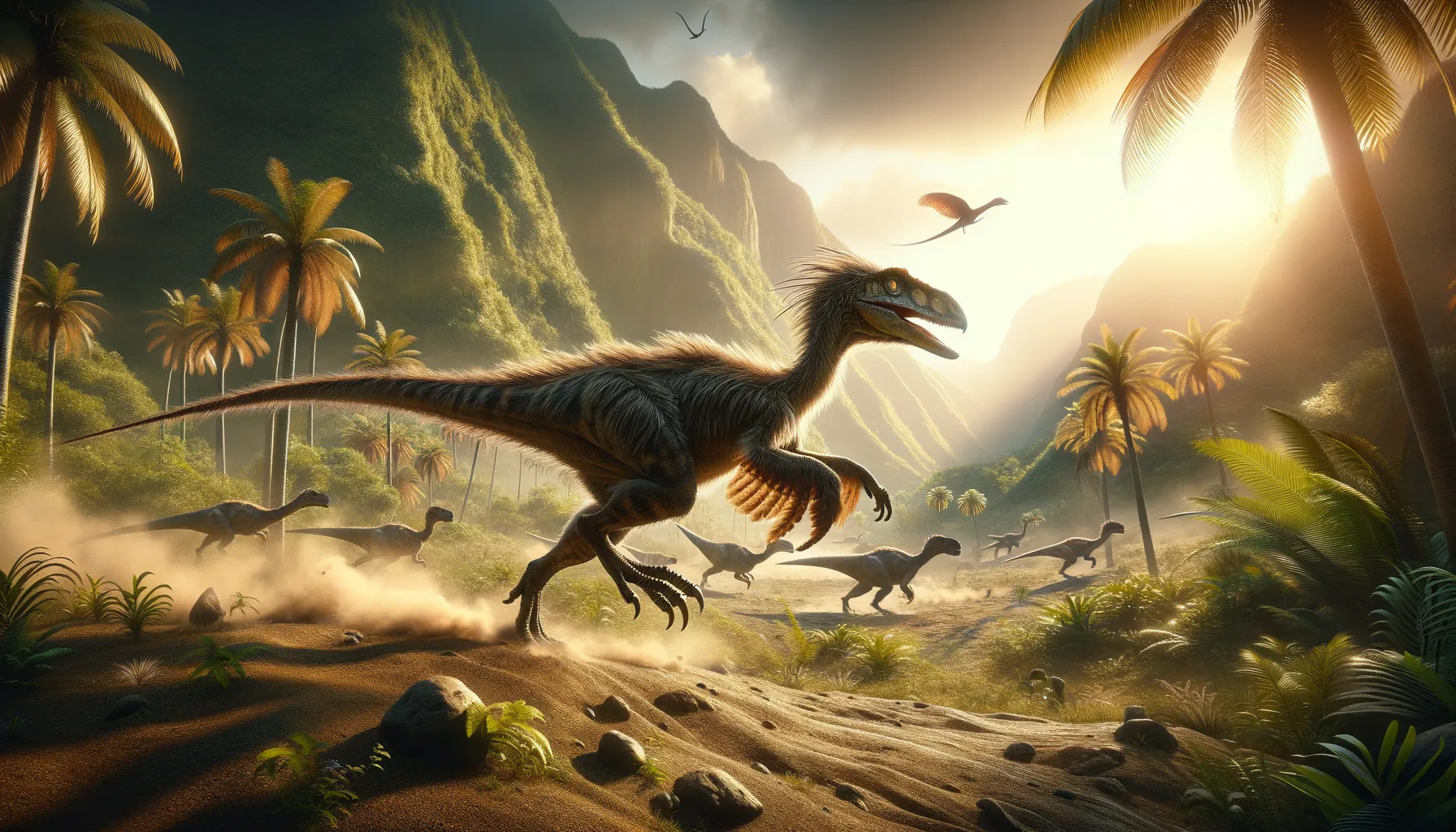
Elopteryx
Swift and nimble, an ancient chase begins.
Period
Cretaceous
Length
Approximately 4 feet long.
Height
Roughly 2 to 3 feet tall.
Weight
Likely around 20 pounds.
Elopteryx was a small, swift dinosaur that lived during the Late Cretaceous period. Its remains were first discovered in Romania, leading to interest and debate among paleontologists about its classification due to fragmentary fossils. Known for its small stature and bird-like characteristics, Elopteryx was likely a nimble predator, adapted to chasing after small prey. Studies suggest it may have been covered in feathers, providing insights into the evolution of modern birds.
Diet
Elopteryx likely fed on small animals such as insects and perhaps small vertebrates. Its sharp teeth and agile frame suggest it was a carnivore, adept at catching quick-moving prey.
Hunting
This dinosaur likely relied on its speed and agility to hunt, pursuing prey through undergrowth or along open plains. It may have used its keen senses to detect and ambush unsuspecting animals.
Environmental challenges
During the Cretaceous period, Elopteryx lived in a dynamic environment with fluctuating resources. Climate changes could have influenced its food availability, prompting adaptive strategies. Predation pressures from larger dinosaurs would have posed a constant threat, necessitating strong survival instincts and behaviors. Competition with other small predators may have required Elopteryx to exploit unique hunting niches.
Speed
Believed to be quick for its size.
Lifespan
Estimated around 10 to 20 years.
First discovery
Unearthed in Romania in the early 20th century.
Fun Facts
- Elopteryx was a small, bird-like dinosaur that lived during the Late Cretaceous period, around 70 million years ago.
- Its fossils were first discovered in Romania, in a region once part of a prehistoric island ecosystem.
- Elopteryx means 'marsh wing', a name inspired by where its fossils were found.
- This dinosaur had hollow bones, which could suggest it was lightweight and possibly agile.
- Although its lifestyle remains somewhat mysterious, some scientists believe it might have been an omnivore, eating both plants and small animals.
- Elopteryx belongs to the group called theropods, which also includes the well-known Tyrannosaurus rex.
- There is still some debate among paleontologists about its exact classification, with some thinking it may be more closely related to birds than to other dinosaurs.
Growth and Development
Elopteryx likely hatched from eggs and went through rapid juvenile growth, as seen in many small theropods. Over time, it developed characteristic bird-like features, which may have included early feathering. Growth patterns likely allowed it to quickly reach full size, aiding its survival. Its development may show evolutionary trends toward modern avian species.
Habitat
Elopteryx inhabited the forests and plains of the region that is now Romania. This environment was rich in vegetation and diverse in terms of other life forms, providing ample opportunities for hunting. The mixed terrain would have included both open spaces and dense foliage, demanding adaptability from its inhabitants. Seasonal changes could affect resource availability, influencing its behavioral patterns.
Interaction with other species
Elopteryx likely coexisted with other smaller dinosaurs, as well as larger theropods, necessitating acute awareness of its surroundings. It may have competed with similarly sized dinosaurs for food, affecting its foraging tactics. Interaction with plant-eating species likely included watching for disturbances that indicate predators, benefiting from mixed herds' warning systems.
Natural lifespan
Elopteryx had a natural lifespan of up to two decades in the wild.
Reproduction
Elopteryx likely laid clutches of eggs in nests, similar to other theropods. Parental care could have involved guarding and warming the eggs until hatching. After birth, juveniles might have been cared for briefly, learning crucial survival skills. This reproductive strategy would ensure species continuity despite environmental pressures.
Social behaviour
Elopteryx might have exhibited solitary or small group behaviors, depending on resource availability. Interactions within groups could involve cooperative hunting or territorial disputes. Communication may have been through visual displays or vocalizations to coordinate activities or warn of danger. Social structures were likely adaptable to changing ecological conditions.
Fossil locations
Fossils of Elopteryx have primarily been found in Romania, highlighting this region's importance in paleontological studies. The discovery sites have provided crucial insights into Late Cretaceous ecosystems. These findings contribute to understanding the geographic range and diversity of small theropod dinosaurs in Europe.
